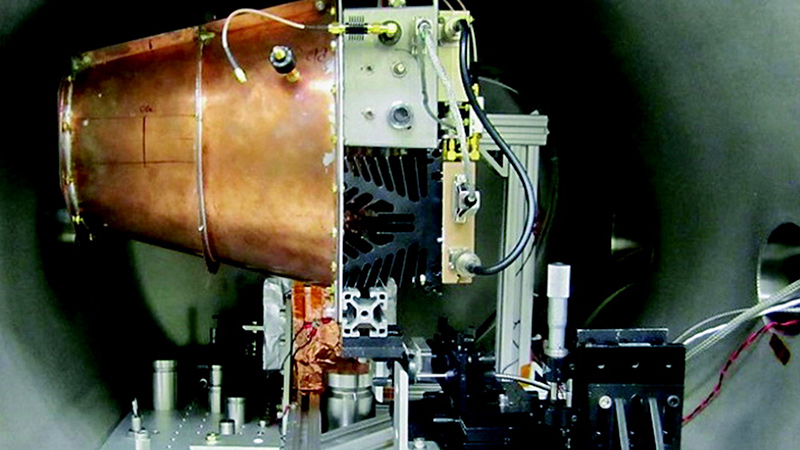Stay Up to Date
Submit your email address to receive the latest industry and Aerospace America news.
The Nuclear and Future Flight Propulsion Technical Committee works to advance the implementation and design of nonchemical, high-energy propulsion systems other than electric thruster systems.
The year saw advanced propulsion research hit the mainstream with dozens of media articles discussing the EmDrive, or Electromagnetic Drive, using often inappropriate terms like “warp drive.”
The articles came after news leaked that a research paper on the EmDrive had been accepted for peer-reviewed publication in the July/August edition of the AIAA Journal of Propulsion and Power. Many articles claimed NASA researchers had confirmed the viability of a technology that would rewrite the physics textbooks. In fact, the paper claimed no such thing. Instead, it discussed the experiments the NASA Eagleworks team had conducted in 2016 at Johnson Spaceflight Center in Houston to test for any unexplained thrust that might be produced. Similar research to objectively assess the technology is ongoing at other institutes, such as the Technical University at Dresden in Germany. Researchers continue their efforts to reduce experimental uncertainty and establish an upper-bound on any perceived effect. While it is not possible to prove experimentally that there is no effect at any scale, it is possible to demonstrate that any real effect is below a level at which a practical system could be realized.
In May, the NASA Innovative Advanced Concepts program demonstrated ongoing interest and support for future flight research when it awarded four new Phase 1 and one new Phase 2 research awards supporting advanced propulsion and power technologies.
Princeton Satellite Systems’ Phase 2 award supports a direct fusion drive concept that leverages the Princeton Field-Reversed Configuration fusion reactor under development at the Princeton Plasma Physics Laboratory in New Jersey.
For the NIAC Phase 1 awards, two were also for fusion technologies — another novel direct drive concept at NASA’s Marshall Space Flight Center in Alabama and a compact fusion power reactor concept at the University of Maryland. Another Phase 1 award went to NASA’s Jet Propulsion Laboratory to support the development of an advanced power beaming architecture for interstellar precursor missions, potentially enabling a 12-year flight time to 500 astronomical units. The fourth Phase 1 award was granted to the California-based Space Studies Institute to support investigation into the Mach Effect Gravitational Assist Drive, another somewhat controversial propellantless space drive based on a principle of inertia credited to the physicist and philosopher Ernst Mach. These and other NIAC-funded research projects were presented at the NIAC Symposium in Denver at the end of September.
The NASA Space Technology Research Directorate’s Nuclear Thermal Propulsion project (managed at Marshall) progressed. In addition to NASA’s ongoing work with Aerojet Rocketdyne, Dynetics and other companies, Virginia-based BWX Technologies in August was awarded a contract to support NTP reactor design, fuel development and other tasks.
Also in August, a surrogate for the NTP baseline ceramic metal, or cermet, fuel was tested using NASA’s Compact Fuel Element Environmental Tester, taking advantage of features added in a recent CFEET upgrade that allowed for finer control of sample heating rates, more accurate temperature measurement and features to enhance the device’s utility. Work toward demonstrating a subscale exhaust capture system at NASA’s Stennis Space Center in Mississippi was initiated in June.
Contributor: Michael Houts
Related Posts
Stay Up to Date
Submit your email address to receive the latest industry and Aerospace America news.




